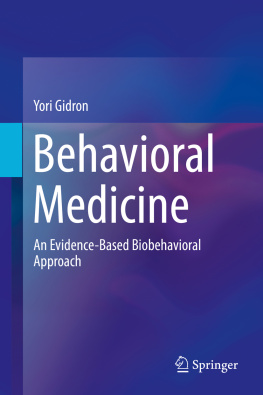Karyn Harvey - Trauma-Informed Behavioral Interventions
Here you can read online Karyn Harvey - Trauma-Informed Behavioral Interventions full text of the book (entire story) in english for free. Download pdf and epub, get meaning, cover and reviews about this ebook. year: 2013, publisher: American Association on Intellectual and Developmental Disabilities, genre: Science fiction. Description of the work, (preface) as well as reviews are available. Best literature library LitArk.com created for fans of good reading and offers a wide selection of genres:
Romance novel
Science fiction
Adventure
Detective
Science
History
Home and family
Prose
Art
Politics
Computer
Non-fiction
Religion
Business
Children
Humor
Choose a favorite category and find really read worthwhile books. Enjoy immersion in the world of imagination, feel the emotions of the characters or learn something new for yourself, make an fascinating discovery.

- Book:Trauma-Informed Behavioral Interventions
- Author:
- Publisher:American Association on Intellectual and Developmental Disabilities
- Genre:
- Year:2013
- Rating:3 / 5
- Favourites:Add to favourites
- Your mark:
Trauma-Informed Behavioral Interventions: summary, description and annotation
We offer to read an annotation, description, summary or preface (depends on what the author of the book "Trauma-Informed Behavioral Interventions" wrote himself). If you haven't found the necessary information about the book — write in the comments, we will try to find it.
In this book, the author describes what doesnt work by outlining the ways in which individuals with intellectual disability may have been damaged by the behavioral approach to their day-to-day actions. She demonstrates what has been missed through this approach: Needs have not been met, individuals have been misdiagnosed, and trauma responses have been triggered through the exclusive use of behavioral controls, both positive and negative.
The author then moves on to describe what works. She explores the topics of stabilization, prevention, intervention, and the mental health plan. She proposes a model of behavioral intervention that does not require the use of restraints or contingencies; instead it promotes safety and security and addresses the outstanding issues around trauma.Numerous case studies are discussed, but all the names and relevant details have been altered to protect individuals, staff, and agencies.
The mental health plan template the author puts forward instructs and informs staff about how to support people who have experienced trauma, both on a small scale and on a large one. She provides examples of this approach with case studies and illustrates how the plans should be written to ensure optimal implementation.
This book gives the professionals and paraprofessionals who have dedicated themselves to this field and to the welfare of individuals with intellectual disability a trauma-informed paradigm within which to support people with intellectual disability psychologically and to establish the critical elements needed for recovery. As the author states in her introduction, when the individual recovers, behaviors change. When the individual recovers, happiness can begin.
Since 1876, the American Association on Intellectual and Developmental Disabilities (AAIDD) has been providing worldwide leadership in the field of disabilities. AAIDD is the oldest and largest interdisciplinary organization of professionals and citizens concerned about intellectual and developmental disabilities.
AAIDD publishes books for professionals in developmental disability in the areas of:
-Supported living
-Definition of intellectual disability
-Disability funding
-Positive behavior support
-Palliative care
-Quality of life
-Health
173 pagesPublished August 12th 2013 by American Association on Intellectual and
Karyn Harvey: author's other books
Who wrote Trauma-Informed Behavioral Interventions? Find out the surname, the name of the author of the book and a list of all author's works by series.











